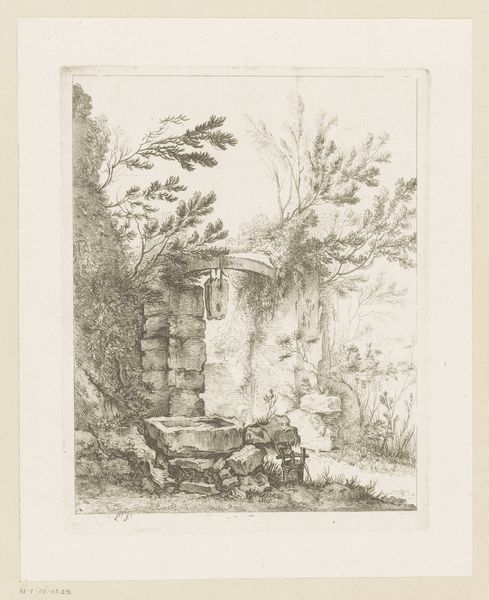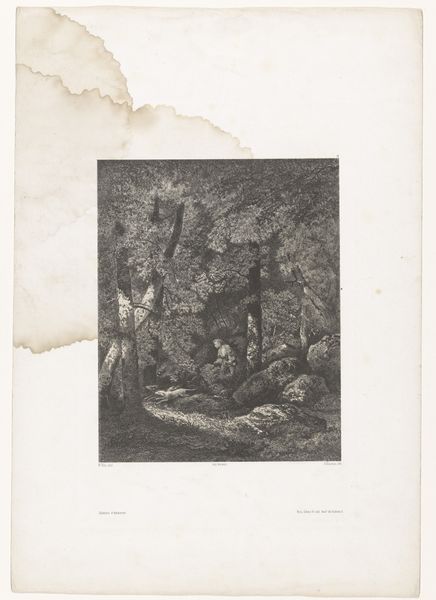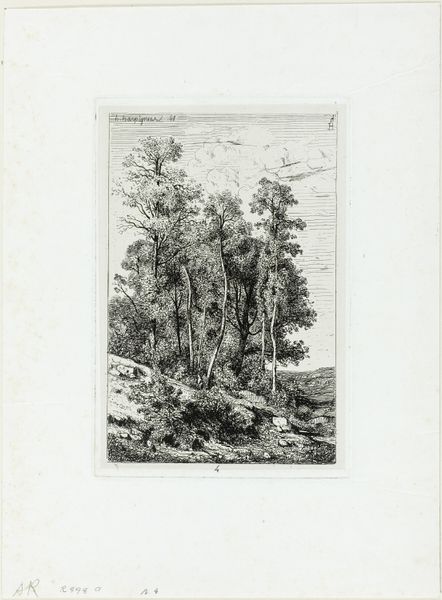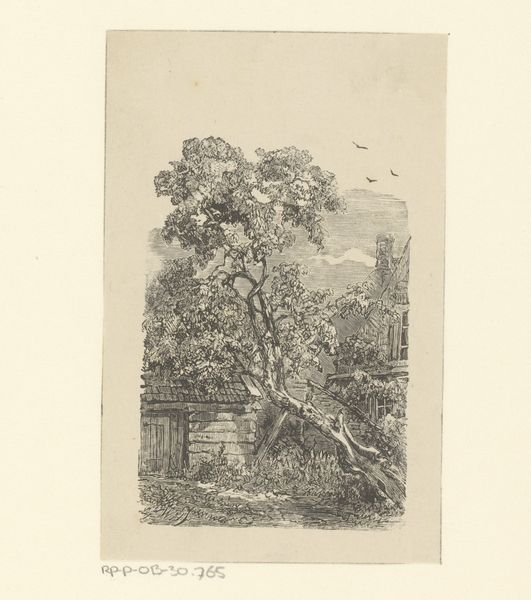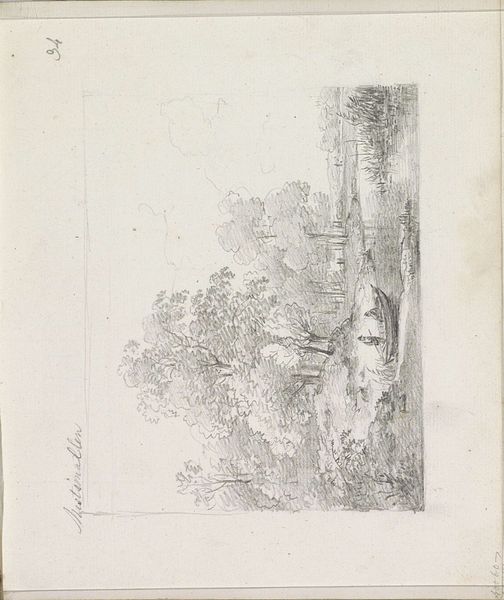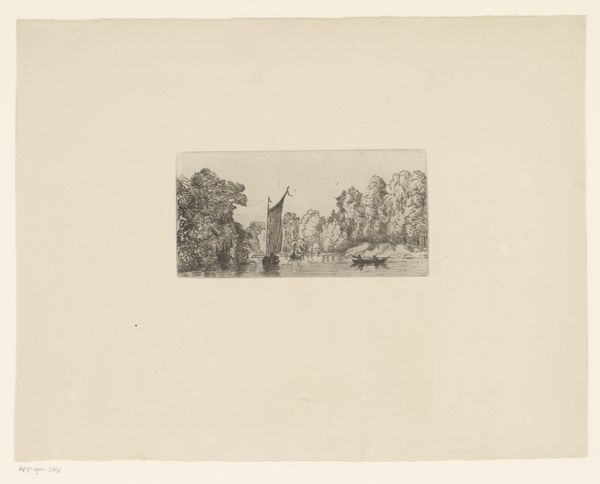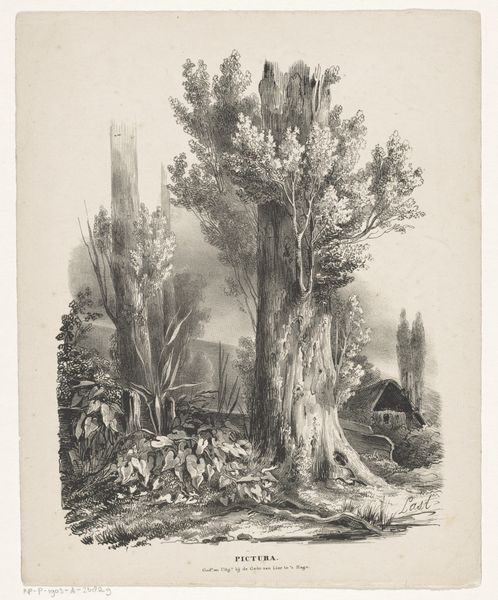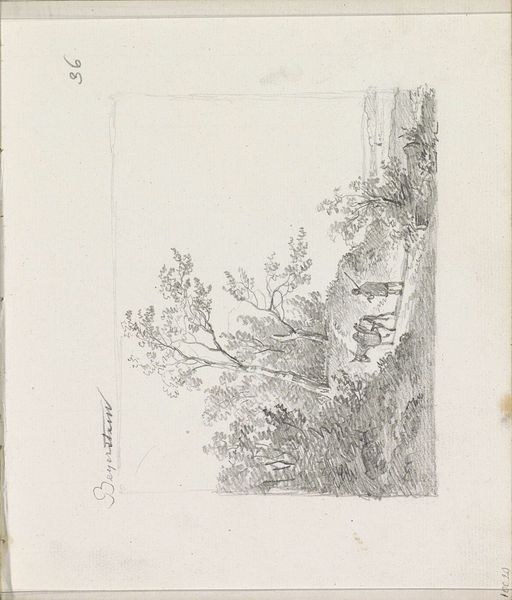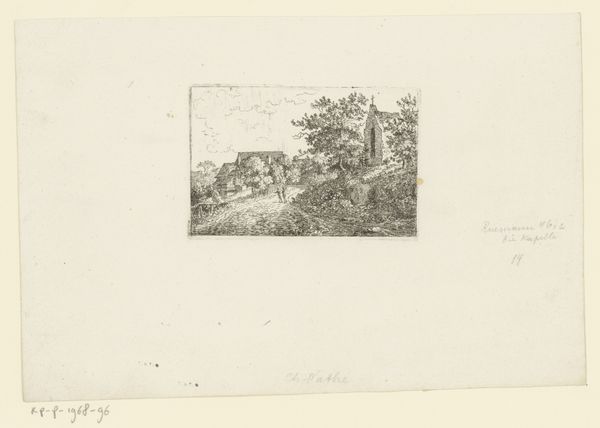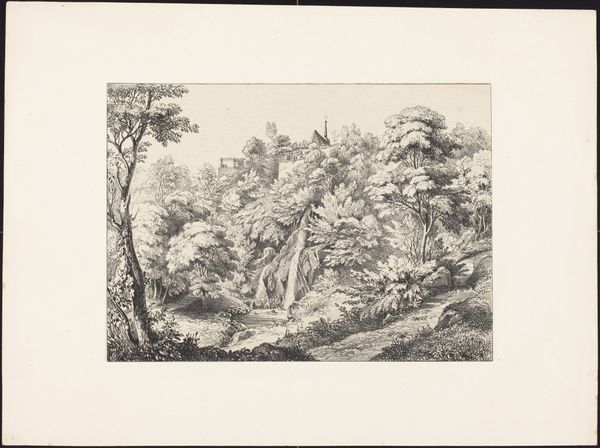
etching, engraving
#
etching
#
landscape
#
etching
#
romanticism
#
northern-renaissance
#
engraving
Dimensions: 231 mm (height) x 223 mm (width) (plademaal)
Curator: Here we have J.P. Møller's "Skovparti" from 1833, currently held at the SMK, Statens Museum for Kunst. It’s an etching, a wonderful example of the artist's skill. Editor: It's intensely detailed! At first glance, I felt a sense of enclosure, almost a secret place tucked away. The trees are so dense, with just a sliver of sky peeking through. Curator: Exactly. Møller's command over the etching technique—the lines he's carved into the plate to create this image—speak to a well-established printing process from this time. Look closely at the depiction of that wooden gate; it appears almost consumed by the encroaching foliage, suggesting ideas about the relationship between human-made objects and nature. Editor: And the gate, a recurring symbol of thresholds. What is the viewer entering, or being barred from? I sense a deep connection to the landscape, maybe even the kind of nature worship prominent in the Romantic period? There is this feeling like the scene contains hidden messages. Curator: That’s insightful. While an "etching" or "engraving," the artwork could be seen in dialog with painting. It speaks to debates circulating in the artistic milieu in Møller’s period regarding which material offered the best means of production, that allowed an artist to deliver "authentic" representation. Editor: Do you feel like the dense lines are meant to inspire a sense of melancholy? Is it related to the materials at hand and how that may restrict an artist to translate feeling to a scene so devoid of colour and tonality? Curator: Certainly, it evokes a Romantic sentiment through its portrayal of the sublimity of the untouched forest. You are quite right to pick up the restrictions to the translation. What I do know is that Møller lived between city and rural landscapes and perhaps the making of these natural spaces through his means, gave him and other like minded individuals something concrete and valuable, while the rise of urbanised modernity advanced in pace all around him. Editor: Seeing nature rendered this way, especially knowing its historical context gives a somber tint to the artwork that I find to be increasingly impactful today. Thank you for all that you shared about this piece. Curator: A worthwhile reading indeed and my pleasure! I am happy to have thought about how the materiality and artistic choices bring additional context into an already fascinating artwork!
Comments
No comments
Be the first to comment and join the conversation on the ultimate creative platform.

